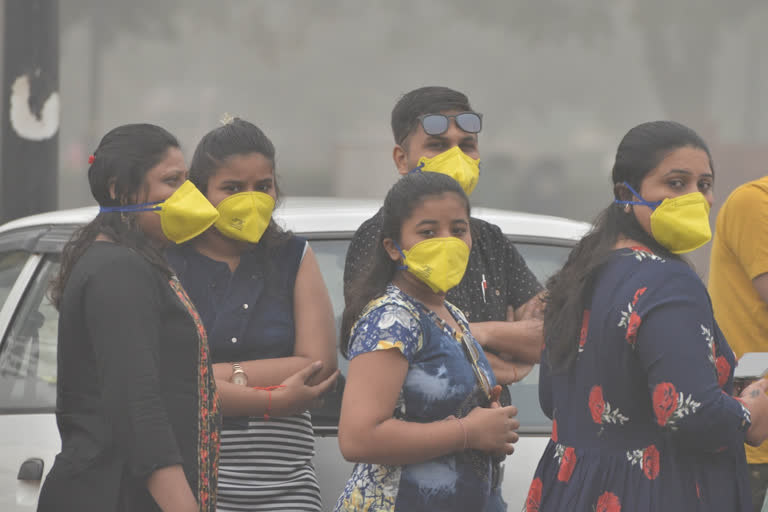New Delhi: The national capital's air quality was recorded in the "poor" category on Sunday, with a central government agency reporting 1,230 farm fires in neighbouring states the maximum in a day so far this season.
The share of stubble burning in Delhi's PM2.5 pollution stood at 17 per cent. It was 19 per cent on Saturday, 18 per cent on Friday, around one per cent on Wednesday and around 3 per cent on Tuesday, Monday and Sunday.
The city recorded a 24-hour average air quality index (AQI) of 254. It was 287 on Saturday, 239 on Friday and 315 on Thursday, the worst since February 12 (AQI 320).
An AQI between 0 and 50 is considered 'good', 51 and 100 'satisfactory', 101 and 200 'moderate', 201 and 300 'poor', 301 and 400 'very poor', and 401 and 500 'severe'.
During the daytime, winds are blowing from the northwest, bringing pollutants from farm fires. At night, calm winds and low temperatures are allowing the accumulation of pollutants, according to an India Meteorological Department official.
Meanwhile, Union Environment Minister Prakash Javadekar on Sunday said the pollution problem cannot be resolved in a day and continuous efforts are needed to tackle each of the contributing factors.
Also Read: Share of stubble burning in Delhi's pollution likely to increase
Interacting with people during a Facebook Live event, he said the major factors behind air pollution in the country are traffic, industries, waste, dust, stubble, geography and meteorology.
Dust is the major factor behind air pollution in north India, the minister said.
The soil type in north India is alluvial. Therefore, there's a lot of dust, which is the major reason behind air pollution in the region, he said.
"Dust suppressant and water sprinklers are used to tackle it... We have also been asking all agencies, (state) governments and corporations, to close unpaved roads," Javadekar said.
He added, "The pollution problem cannot be resolved in one day. Continuous efforts needed to tackle each of the contributing factors."
Tackling pollution in Delhi is not just the responsibility of municipal corporations and the city government, the Union Minister said, adding, "The air shed is large and includes parts of Rajasthan, Haryana, Uttar Pradesh."
"After a number of meetings over the years, we have prepared short-term, medium-term and long-term plans and reviewed the progress."
The same approach will be adopted for another 100 cities in India to improve their air quality in the next three to four years, he said.
Javadekar said e-vehicles are becoming popular and over two lakh e-vehicles were being used in India currently with the government has provided a subsidy for around 70,000 of those.
"I myself use an e-vehicle. The e-car is economical... one can travel a kilometre in 70-80 paise. I also drive an e-scooty."
The government introduced BSVI fuel which reduces vehicular emissions by up to 60 per cent. Metro and e-buses have been introduced to reduce vehicular pollution, he said.
The government is taking steps to phase out pollution-causing power plants by 2022. Zigzag technology has been brought in for brick kilns while industries are using piped natural gas, Javadekar said.
(With inputs from PTI)
Also Read: Scientists develop low cost technique to bypass stubble burning



